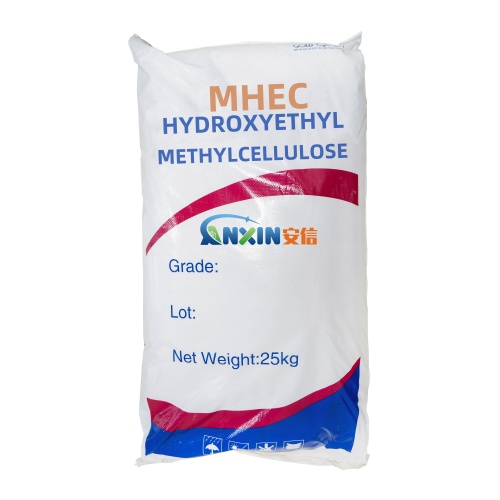Methyl Hydroxyethyl Cellulose MHEC
Methyl Hydroxyethyl Cellulose (MHEC) is a vital chemical compound extensively used in various industries, primarily in construction, pharmaceuticals, cosmetics, and food. It belongs to the cellulose ether family and is derived from natural cellulose, a polysaccharide found in plant cell walls. MHEC possesses unique properties that make it indispensable in a wide range of applications.
Structure and Properties:
MHEC is synthesized through the chemical modification of cellulose, typically by reacting alkali cellulose with methyl chloride and ethylene oxide. This process results in a compound with both methyl and hydroxyethyl substituents attached to the cellulose backbone. The degree of substitution (DS) determines the ratio of these substituents and greatly influences the properties of MHEC.
Hydrophilicity: MHEC exhibits high water solubility due to the presence of hydroxyethyl groups, which enhance its dispersibility and allow it to form stable solutions.
Thermal Stability: It retains stability over a wide range of temperatures, making it suitable for applications where thermal resistance is required.
Film Forming: MHEC can form films with excellent mechanical strength and flexibility, making it useful in coatings and adhesives.
Applications:
1. Construction Industry:
Mortars and Renders: MHEC serves as a vital additive in construction materials such as mortars, renders, and tile adhesives. It improves workability, water retention, and adhesion, enhancing the overall performance of these products.
Self-Leveling Compounds: In self-leveling compounds, MHEC acts as a rheology modifier, ensuring proper flow and leveling properties.
Exterior Insulation and Finishing Systems (EIFS): MHEC enhances the cohesion and workability of EIFS materials, contributing to their durability and weather resistance.
2. Pharmaceuticals:
Oral Dosage Forms: MHEC is used as a binder, disintegrant, and sustained-release agent in tablets and capsules, controlling drug release and improving patient compliance.
Topical Formulations: In creams, gels, and ointments, MHEC functions as a thickening agent, stabilizer, and film former, enhancing product consistency and efficacy.
3. Cosmetics:
Personal Care Products: MHEC is commonly found in shampoos, lotions, and creams, where it imparts viscosity, stabilizes emulsions, and provides a smooth texture.
Mascaras and Eyeliners: It contributes to the texture and adhesion properties of mascara and eyeliner formulations, ensuring even application and long-lasting wear.
4. Food Industry:
Food Thickening and Stabilization: MHEC is utilized as a thickener, stabilizer, and emulsifier in a variety of food products, including sauces, dressings, and dairy alternatives.
Gluten-Free Baking: In gluten-free baking, MHEC helps mimic the viscoelastic properties of gluten, improving dough texture and structure.
Environmental and Safety Considerations:
MHEC is generally regarded as safe for use in various applications. However, as with any chemical substance, proper handling and storage practices are essential to minimize risks. It is biodegradable and does not pose significant environmental concerns when used according to recommended guidelines.
Methyl Hydroxyethyl Cellulose (MHEC) is a versatile compound with diverse applications across industries. Its unique combination of properties, including water solubility, thermal stability, and film-forming ability, makes it invaluable in construction, pharmaceuticals, cosmetics, and food. As technology advances and new applications emerge, MHEC is likely to continue playing a crucial role in enhancing the performance and functionality of various products.
Post time: Apr-11-2024
